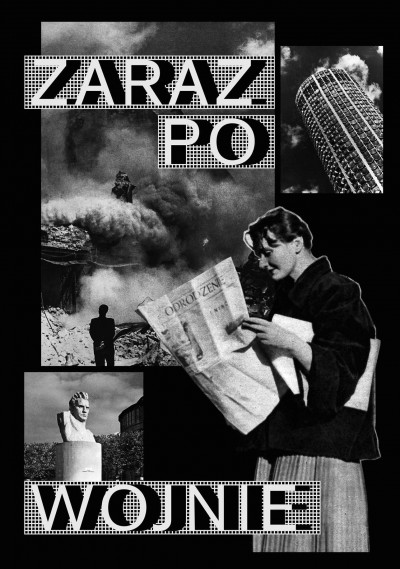
Documentation and library
year of publication: 2015
edited by: Joanna Kordjak, Agnieszka Szewczyk
introduction: Hanna Wróblewska
texts: Joanna Kordjak, Agnieszka Szewczyk, Wojciech Włodarczyk, Eryk Krasucki, Agnieszka Szewczyk, Julia Leopold, Magdalena Komornicka, Marta Leśniakowska, Waldemar Baraniewski, Dorota Jarecka
graphic design: Krzysztof Bielecki
publisher: Zachęta – National Gallery of Art
ISBN: 9788364714221
Just After the War , the publication paints the landscape of post-WWII Polish art in all its tragedy, complexity, uncertainty and ambiguity. It shows how artists reacted to the new, dynamically changing socio-political reality and an atmosphere, on the one hand, of the ‘euphoria of reconstruction’, and on the other, of post-war mourning and ‘great trepidation’. For them, it was a time of dramatic choices, both ethical and artistic. Some, repressing the past, tried to return to the pre-war artistic order; others sought a language capable of expressing the apocalypse of war.
A dozen or so essays dealing with the era’s cultural policy, painting, architecture, urban planning, film and photography have been accompanied by short texts devoted to the history of selected works, exhibitions, events or institutions. The authors examine phenomena such as the appropriation by the new regime’s propaganda of styles and artistic idioms developed back in the 1930s, the landscape of ruined cities (in both its utilitarian and metaphoric meanings), the multifarious contexts of photography, or interesting artistic milieus.
The book includes a chronology of political and artistic events, with an epilogue in the form of self-criticisms written at the time by five important figures of the era, who are also among the protagonists of the exhibition: Mieczysław Berman, Jerzy Borejsza, Tadeusz Borowski, Bohdan Lachert, and Andrzej Wróblewski. The new regime pulled the best artists into its propaganda machinery in order to soon demand self-criticism from them and force them to accept the only correct artistic doctrine. These texts serve as an important and meaningful testimony of the end of the five-year period as well as heralding the next era.
